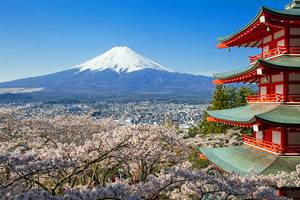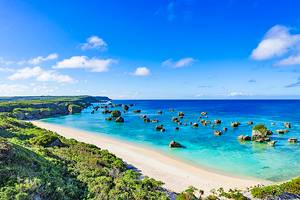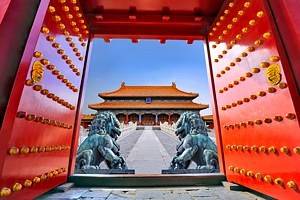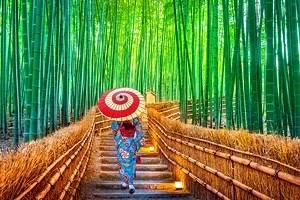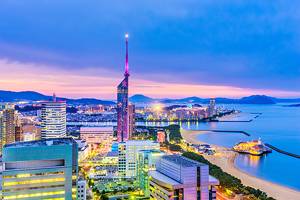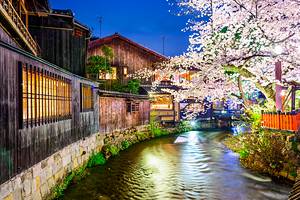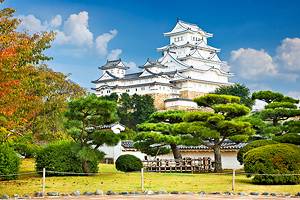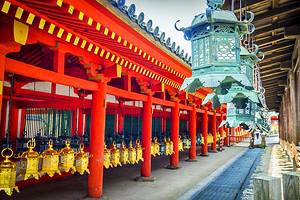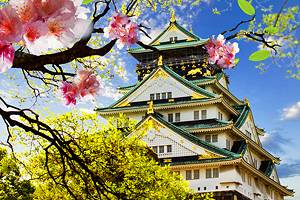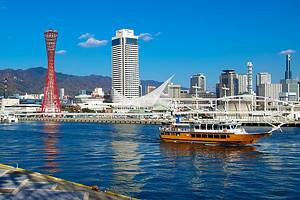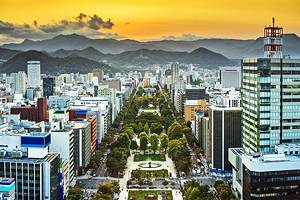Tourist Attractions in Tokyo
When it comes to the greatest cities in the world, you cannot do better than Tokyo. A juxtaposition of deep tradition and fast-paced, modern energy, Tokyo, the capital city of Japan, is one of the best places to visit in Asia. It is home to the Imperial Palace and the seat of Government and Parliament, as well as luxury hotels, Michelin-starred restaurants, and fantastic shopping. Located in East-Central Honshu, the largest of Japan's main islands, this heavily populated city serves as a great base from which to explore other parts of the country.
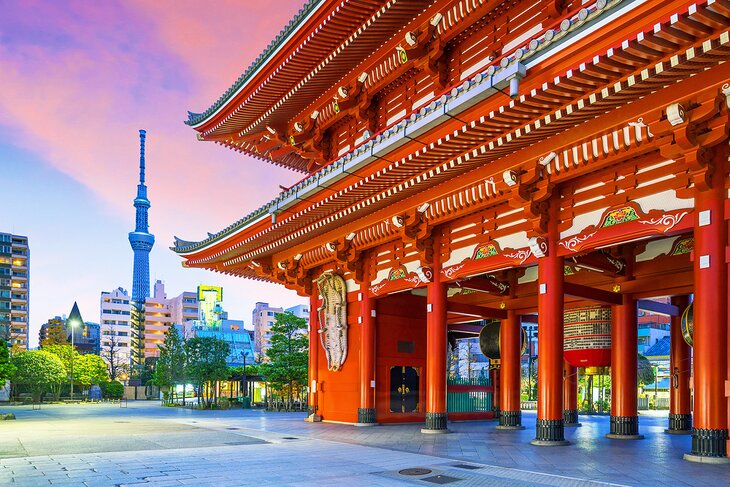
One of the world's most modern cities in terms of its infrastructure and design — due largely to the 1923 earthquake and the devastation of WWII — Tokyo also holds the title of the world's most expensive city in which to live. Fortunately, it's also one of the easiest to get around thanks to its superb rail and subway networks.
The cultural side of Tokyo is famous for its numerous things to do and top attractions, including museums; festivals; internationally noted cuisine; and professional sports clubs, including baseball, football, and traditional Japanese pursuits like sumo wrestling. It's also a city rich in music and theater, with numerous venues featuring everything from Japanese modern dramas to symphony orchestras and pop and rock concerts.
Explore the city with our list of the top things to do in Tokyo.
Enjoy Nature and Art at the Meiji Shrine
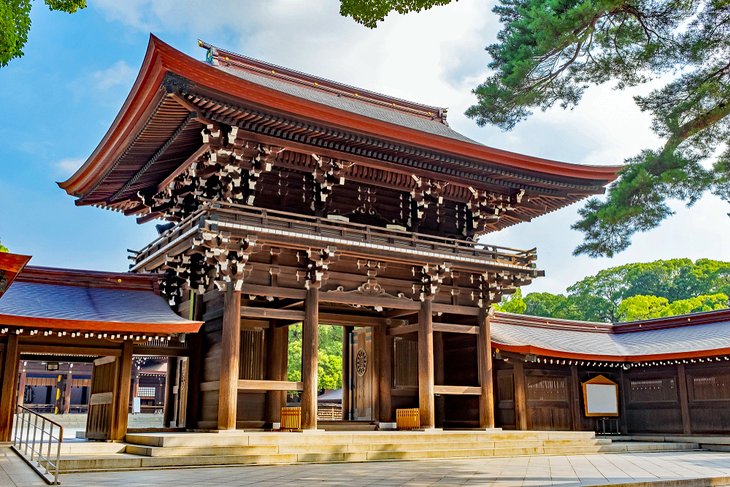
Highlights: An important religious site surrounded by 175 acres of forest
Dedicated to Emperor Meiji and his wife, Empress Shōken, the construction of the splendid Meiji Shrine (Meiji Jingū) began in 1915 and was completed in 1926. Although the original structure was destroyed during WWII, it was rebuilt in 1958 and remains one of Tokyo's most important religious sites.
Surrounded by a 175-acre evergreen forest that is home to some 120,000 trees representing species found across Japan — as well as the interesting "wishing tree," on which visitors can write and hang their deepest wishes — the shrine's highlights include its Inner Precinct (Naien) with its museum containing royal treasures, and the Outer Precinct (Gaien).
It's in the Outer Precinct that you'll find the Meiji Memorial Picture Gallery with its superb collection of murals relating to the lives of the emperor and empress. Be sure to also visit the adjacent Meiji Shrine Inner Garden (Yoyogi Gyoen), an attractive public garden complete with a teahouse, iris garden, and a pleasant arbor.
Address: 1-1 Yoyogikamizonocho, Shibuya City, Tokyo
Explore the Shinjuku Gyoen National Garden
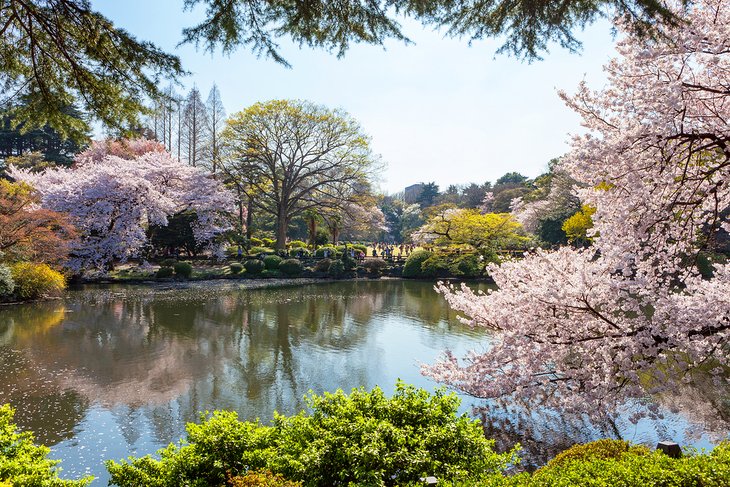
Highlights: Three types of traditional gardens in one, including 1,500 cherry trees
Walk through one of Tokyo's most historic pieces of land when you visit the Shinjuku Gyoen National Garden. Formerly the residence of the Naito family during the Edo period (17th-19th centuries), it was transferred to the Imperial Family. It is now a national garden, which opened in 1949, and is considered to be one of the most beautiful in Japan.
The garden is considered one of the best because it fuses together three types of traditional garden: French Formal, English Landscape, and Japanese traditional. It also happens to be one of the best spots in Tokyo to view the cherry blossoms, as the garden has roughly 1,500 cherry trees. You'll also find Himalayan cedars, cypresses, and tulip trees. The garden is very popular in the autumn, when the leaves start to change to crimson and gold.
Other features of the garden include a greenhouse, beautiful ponds, and several pavilions.
Address: 11 Naitomachi, Shinjuku City, Tokyo
Enjoy Nature at Ueno Park and Ueno Zoo
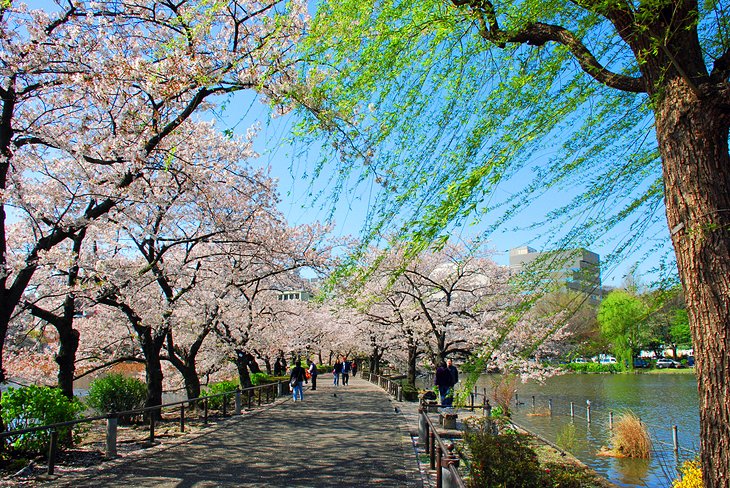
Highlights: A 212-acre park home to ponds, historic shrines, and the Ueno Zoo
A paradise-like oasis of green in the heart of busy Tokyo, Ueno Park (Ueno Kōen) is the city's largest green space and one of its most popular tourist attractions. In addition to its lovely grounds, the park also boasts numerous temples and museums to explore.
Criss-crossed by pleasant gravel paths, this 212-acre park includes highlights such as a trip on a small boat on the reed-fringed Shinobazu pond, around a little island with its Bentendo Temple. Be sure to also visit the 17th-century Toshogu Shrine (Nikkō Tōshō-gū), with its 256 bronze and stone lanterns.
Another highlight here is Ueno Zoo (Onshi Ueno Dōbutsuen). Opened in 1882, it is Japan's oldest zoo, and is famous for the pandas presented by the People's Republic of China.
While it's a large attraction and houses more than 3,00 animals representing some 400 species, having a fun monorail connecting its various components can help speed up a visit (and make it even more enjoyable).
The Aqua-Zoo, one of the largest aquariums in Asia, is also worth a visit, especially if you're traveling with kids.
Address: 9-83 Uenokoen, Taito City, Tokyo
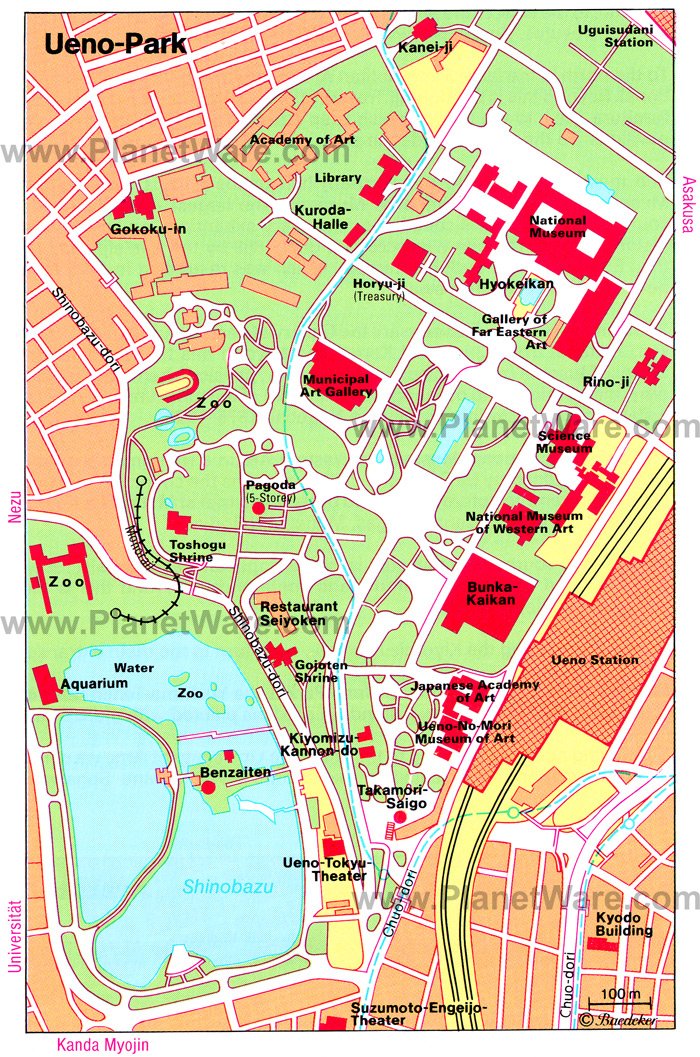
Visit the Sensō-ji Temple
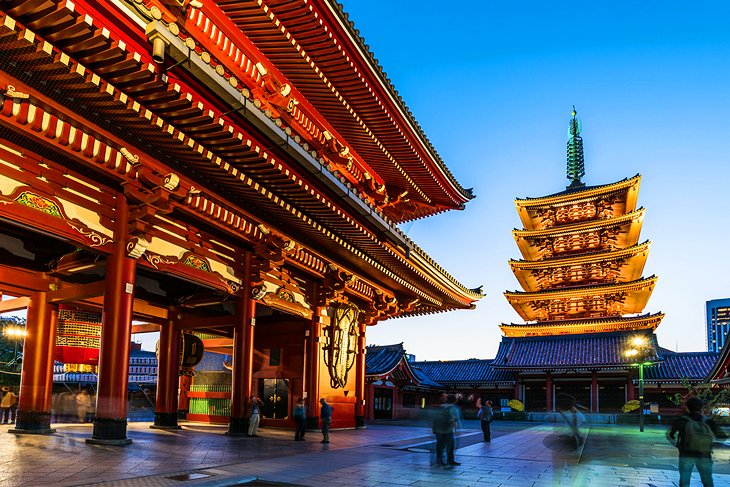
Highlights: A centuries-old temple with a 3.3-meter-high red paper lantern and incense that is said to heal ailments
In the Asakusa district of Tokyo, the exquisite Sensō-ji Temple (Kinryū-zan Sensō-ji)) – the city's most famous shrine – stands at the end of a long street market hosting vendors selling masks, carvings, combs made of ebony and wood, toys, kimonos, fabrics, and precious paper goods.
Dedicated to Kannon, the Buddhist goddess of compassion, the temple was established in AD 645 and retains its original appearance despite having been rebuilt numerous times.
Highlights of a visit include seeing the Kaminari-mon Gate with its 3.3-meter-high red paper lantern bearing the inscription "Thunder Gate," as well as the famous and much-loved Incense Vat, reputed to drive away ailments (you'll see people cupping their hands around the smoke and applying it to the part of their body needing healing).
Also of note are the fascinating temple doves, said to be Kannon's sacred messengers. Be sure to drop a coin in the Omikuji boxes near the entrance, from which you can retrieve a piece of paper that will tell your fortune.
Afterward, be sure to explore the rest of the 50-acre temple precinct with its warren of lanes. If you can, revisit the temple again at night for a completely different (and far less crowded) illuminated experience.
Address: 2 Chome-3-1 Asakusa, Taito, Tokyo 111-0032
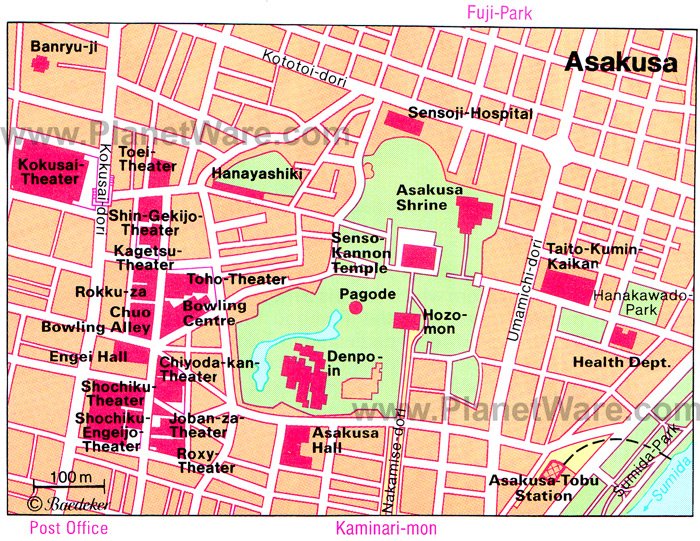
Shop 'Til you Drop in the Ginza District
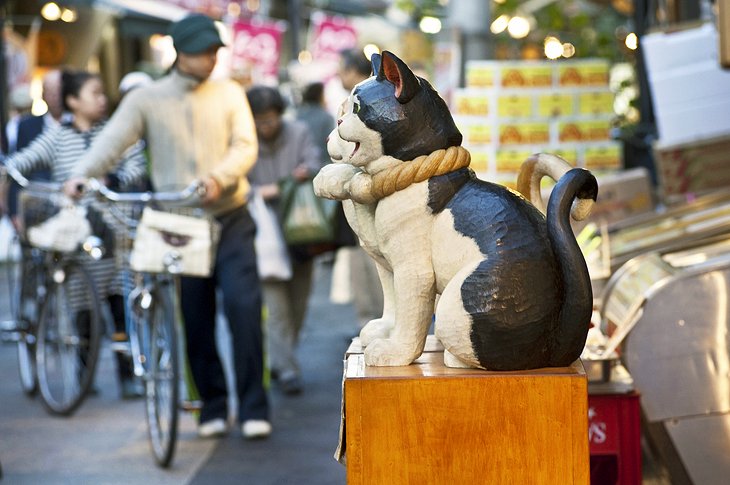
Highlights: A paradise for shoppers with hundreds of shops and restaurants in one of the world's largest pedestrian zones
Ginza is Tokyo's busiest shopping area and it's as iconic as Times Square in New York, and much older. It has in fact been the commercial center of the country for centuries and is where five ancient roads connecting Japan's major cities all met. Lined by exclusive shops and imposing palatial stores, the Ginza district is also fun to simply wander around or. Better still, sit in one of its many tea and coffee shops or restaurants while watching the world rush past.
At weekends, when everything is open, it's a shopper's paradise as traffic is barred, making it one of the world's largest pedestrian zones. Come nightfall, gigantic advertising panels on its many buildings bathe Ginza in bright neon light.
It's also where you'll find the famous Kabuki-za Theatre (see #12 below), home to traditional Kabuki performances, as well as the Shinbashi Enbujō Theatre in which Azuma-odori dances and Bunraku performances are staged.
See the View from the Tokyo Skytree
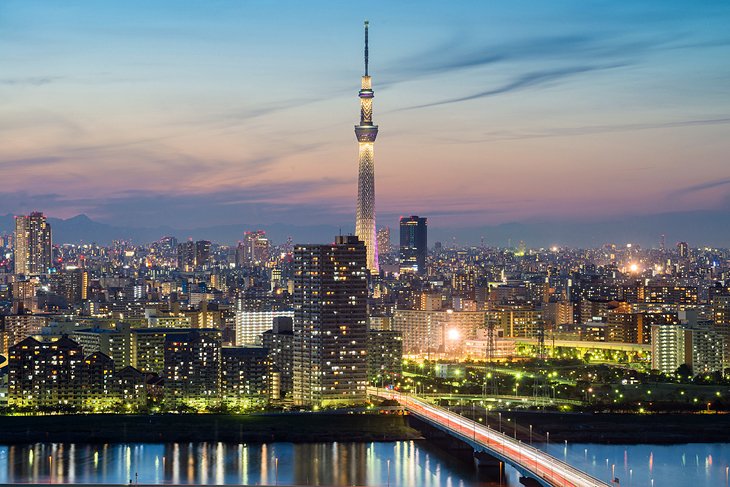
Highlights: The tallest structure in the country, featuring a restaurant and multiple observation decks
It's hard to miss the Tokyo Skytree (Tōkyō Sukaitsurī). This 634-meter-tall communications and observation tower rises out of the city's Sumida district of Minato like a huge rocket ship.
The country's tallest structure (and the world's tallest freestanding tower), the Tokyo Skytree opened in 2012 and has quickly become one of the city's most visited tourist attractions thanks to the incredible panoramic views from its restaurant and observation decks.
With a base designed in the form of a massive tripod, the tower includes a number of cylindrical observation levels, including one at the 350-meter mark, and another at the 450-meter point - the latter includes a unique glass spiral walkway to an even higher viewpoint with glass floors for those with strong stomachs.
Be sure to also check out the smaller and much older Tokyo Tower, built in 1958 and once the city's tallest structure.
Address: 1 Chome-1-2 Oshiage, Sumida City, Tokyo
Wander through the Tokyo National Museum
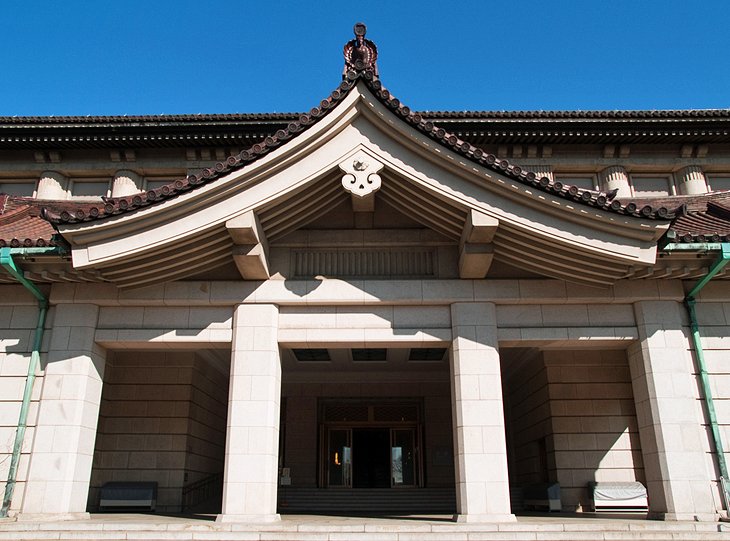
Highlights: One of the largest collections of historic Japanese clothing and pottery from across Asia
Tokyo National Museum (ōkyō Kokuritsu Hakubutsukan) houses more than 100,000 important works of Japanese, Chinese, and Indian art, including more than 100 national treasures.
Opened in 1938, the TNM, as it's usually known, includes highlights such as numerous Buddhist sculptures from Japan and China dating from the 6th century to the present, as well as fine collections of old textiles, historical weapons, and military equipment.
Also noteworthy are its large collections of historical Japanese clothing and Asian ceramics and pottery. Important artwork includes Japanese paintings from the 7th to the 14th centuries, and another must-see is the museum's exquisite collections of Japanese and Chinese masterpieces of lacquer work of various centuries, including examples of lacquer-carving, gold lacquer, and lacquer with mother of pearl. There are also many fine examples of calligraphy.
English-language guided tours are available. Also worth a visit is the museum's traditional Japanese landscape garden with its three pavilions, including the 17th-century Tein Teahouse (Rokuso-an), and the nearby Museum for East Asiatic Art with its 15 exhibition galleries.
Address: 13-9 Uenokoen, Taito City, Tokyo
Tour the Imperial Palace
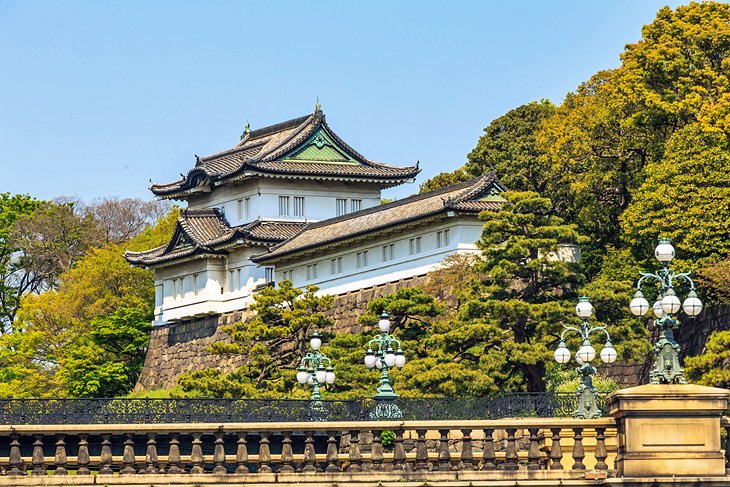
Highlights: A 17th-century palace known for its historic walls, bridge, gate, and garden
The chief attraction of Tokyo's Marunouchi district is the Imperial Palace (Kōkyo) with its beautiful 17th-century parks surrounded by walls and moats. Still in use by the Imperial family, the Imperial Palace stands on the site where, in 1457, the Feudal Lord Ota Dokan built the first fortress, the focal point from which the city of Tokyo (or Edo, as it was then) gradually spread.
As famous as the palace is the Nijubashi Bridge leading to its interior, a structure that takes its name ("double bridge") from its reflection in the water. Other notable features include the two-meter-thick wall surrounding the palace and its gates, one of which leads to the East Higashi-Gyoen Garden.
Tours of the Imperial Palace are available (pre-registration required) and include the Kikyo-mon Gate, Someikan (Visitors' House), Fujimi-yagura ("Mt. Fuji View" Keep), the East Gardens and Inner Gate, the Seimon-tetsubashi bridge, and the Imperial Household Agency Building (be sure to plan ahead).
Another fortress that can be visited is Edo Castle (Chiyoda Castle). Built in 1457, it's located in Tokyo's Chiyoda district.
Address: 1-1 Chiyoda, Chiyoda City, Tokyo 100-8111
Visit the Miraikan and Edo-Tokyo Museums
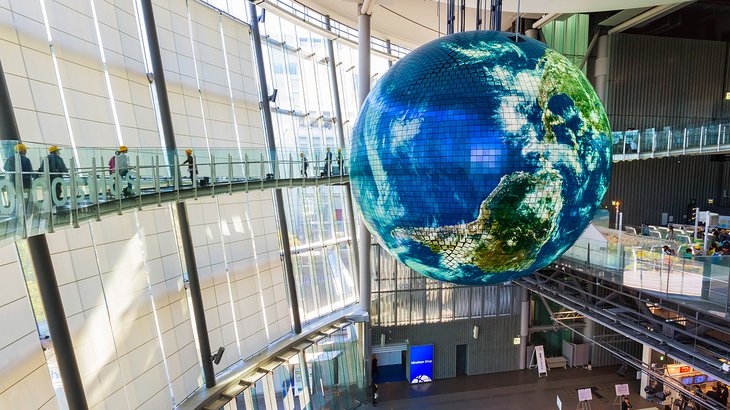
Highlights: Hands-on exhibits that teach visitors about everything from earthquakes to weather, energy, robotics, and much more
One of Tokyo's newest museums, the impressive National Museum of Emerging Science and Innovation (Nippon Kagaku Mirai-kan) – usually simply referred to as the Miraikan – offers a fascinating insight into Japan's leading role in the field of technology.
Created by Japan's Science and Technology Agency, this ultra-modern, purpose-built facility includes many hands-on interactive exhibits dealing with everything from earthquakes to weather, as well as renewable energy and robotics. Highlights include a number of displays relating to modern transportation such as a superb model of a Maglev train, as well as a robotics exhibition.
Also worth visiting is the Edo-Tokyo Museum. Completed in 1993, the museum's exhibits deal with the region's rich past, present, and future. Of particular interest is a replica bridge leading into a mock-up of dwellings in the original old city of Edo.
Address: 2-3-6 Aomi, Koto City, Tokyo
Stop in at the National Museum of Nature and Science
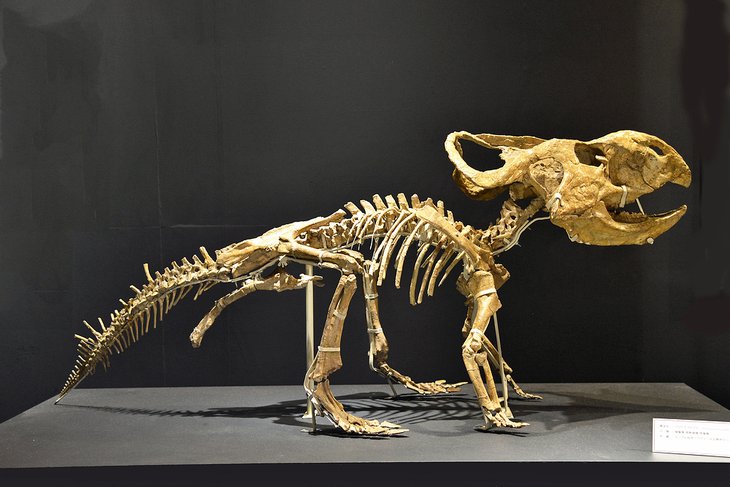
Highlights: A newly renovated museum housing 250,000 items related to natural history and science
Located in Tokyo's Ueno Park, the superb National Museum of Nature and Science (Kokuritsu Kagaku Hakubutsukan) opened in 1871 and is one of the country's oldest museums.
Now completely renovated and modernized, the museum also boasts a reputation as one of the country's busiest and largest museums, housing a vast collection of some 250,000 materials related to natural history and science.
These include many fascinating interactive displays on space development, nuclear energy, and transportation, each allowing visitors a unique insight into the latest scientific and technological advances. Highlights of the Japan Gallery (Nihonkan) include numerous exhibits of prehistoric creatures and the history of the Japanese people, including traditional customs and outfits. In the Global Gallery (Chikyūkan) you'll see many excellent scientific and technology displays, including robotics and vintage vehicles.
Address: 7-20 Uenokoen, Taito, Tokyo 110-871
Spend Time at the National Museum of Western Art
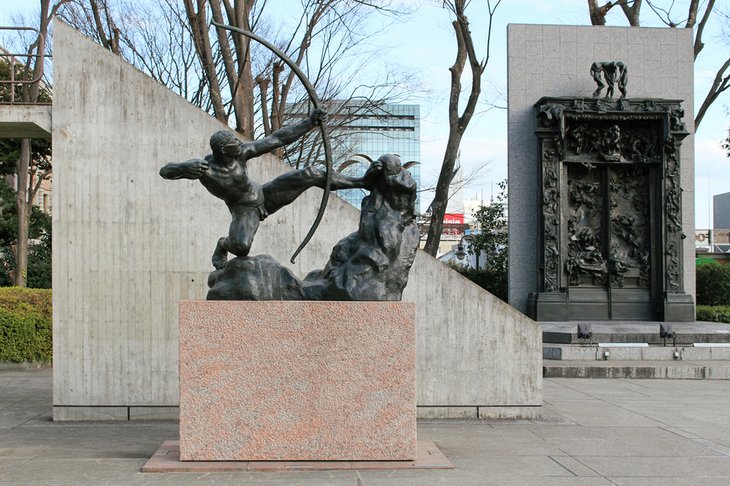
Highlights: A collection of international artists, including Rodin, Monet, Manet, Degas, and many more
Located in Ueno Park and just three minutes' walk from Ueno Station stands the National Museum of Western Art (Kokuritsu Seiyō Bijutsukan). It was built in 1959 to plans by famous Swiss architect Le Corbusier.
The exhibits, largely made up of works by important French artists, come mainly from the collections of Japanese businessman and art collector Kojiro Matsukata, bought during visits to Europe early in the 20th century.
In the courtyard are works by French sculptor Auguste Rodin, while highlights inside are canvases by Impressionists Paul Cézanne, Claude Monet, Edouard Manet, and Edgar Degas. The museum also boasts an excellent restaurant with great views over the courtyard.
Address: 7-7 Uenokoen, Taito City, Tokyo
Enjoy the Collections at the National Art Center
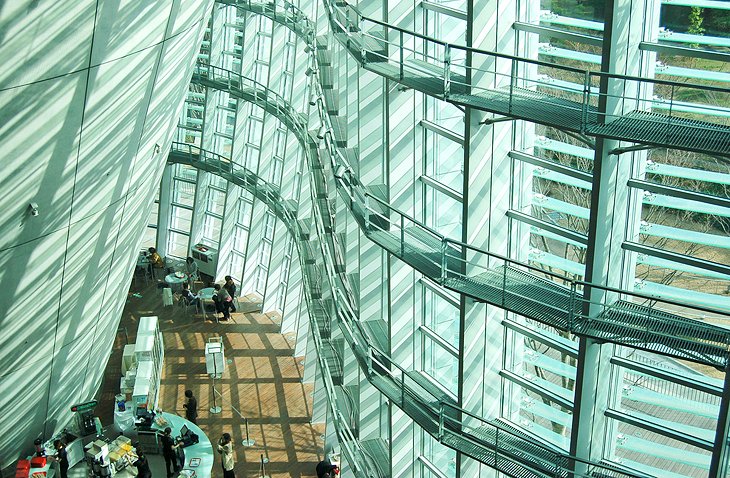
Highlights: A permanent collection of more than 600 paintings from the 20th century
Another of Tokyo's world-class museums, the excellent National Art Center (Kokuritsu Shin-Bijutsukan) is housed in a remarkable curved glass building in the city's Roppongi district. This superb facility only opened in 2007 and has since earned a well-deserved reputation for its fine permanent collection of more than 600 paintings, most from the 20th century. These include many important pieces of modern art and regular visiting exhibitions.
Also worth checking out is the Mori Art Museum (Mori Bijutsukan) on the top floors of the neighboring Roppongi Hills Mori Tower. This fine art museum is notable for its regular exhibits of contemporary artwork from around the globe.
Address: 7-22-2 Roppongi Minato City, Tokyo
See a Show at the Kabuki-za Theatre, Ginza
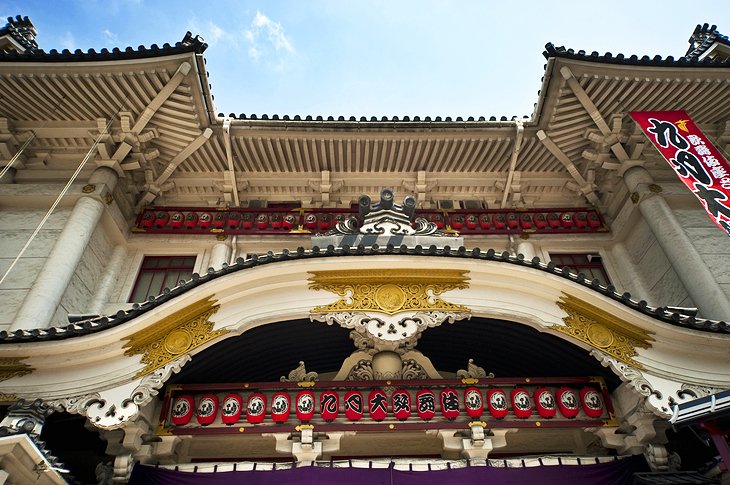
Highlights: A stunning theater showcasing a centuries-old style of performance
Tokyo is home to a number of excellent theaters, none as well known as the historic Kabuki-za Theatre in the city's busy Ginza district, home to famous traditional Kabuki performances.
Based upon a medieval, highly skilled, and often burlesque theatrical form including song and dance, the theater's performances are as popular among tourists as they are with Japanese-speaking people.
The drama and comedy are relatively easy to follow thanks to rich visuals and theatricality. The theater's interior, usually full to capacity with some 2,000 guests, is always intimate and seems more akin to an enormous family get-together than a stage show due to the fact that spectators bring their own food or purchase treats from the various restaurants spread around the auditorium (go for one of the tasty bento box meals).
Performances can last for hours, and spectators stay as long as they wish (or as long as they can bear). And no one seems to take offense at people's comings and goings, nor their loud cheering or jeering.
Address: 4 Chome-12-15 Ginza, Chuo City, Tokyo 104-0061
Get Lost at Yomiuriland
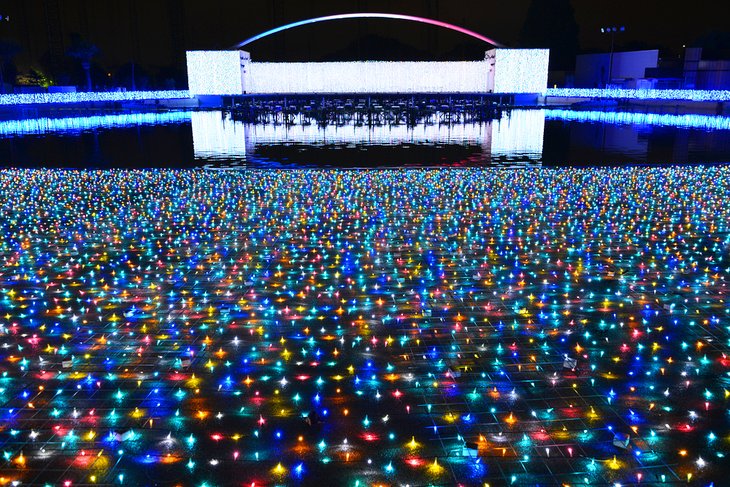
Highlights: An amusement park with hundreds of cherry trees, water attractions, and rides
Sometimes you just want a day to be a kid again, and that's exactly what Yomiuriland has given to the residents of Tokyo since 1964. This amusement park sits 30 minutes from Tokyo and is home to more than 40 attractions and seasonal activities – think roller coasters, rides, light shows, and even a bungee jump.
The park is open year-round and provides something exciting to do at each time of year. In the spring, the park's more than 1,000 cherry trees blush with a blanket of powder-soft pinks. The summer means the opening of the park's many pools and water attractions. Come winter, the landscape is transformed into a twinkling snowscape wonderland.
Most travelers come to Yomiuriland to ride the Bandit, a rollercoaster that snakes its way through the tops of the cherry trees. Of course, the summer pools and waterslides are also a major selling point for this thrill park. Visitors will also find shopping and restaurants and a stage for entertainment.
Address: 4015-1 Yanokuchi, Inagi, Tokyo 206-8566, Japan
Scope the Fashion in Harajuku
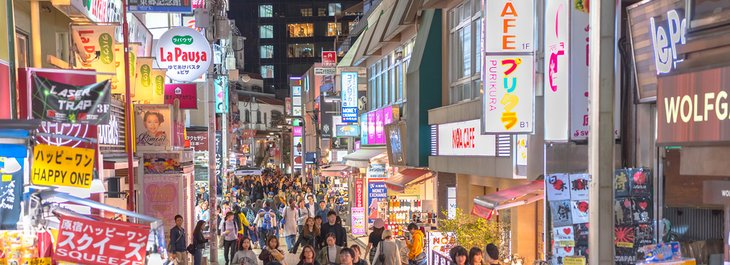
Highlights: Outrageous fashion and futuristic boutiques sit alongside historic attractions and museums.
Nothing is too outrageous when it comes to Tokyo's frenetic Harajuku District. The neighborhood refers to the area near the Harajuku Station, sandwiched between Shinjuku and Shibuya. If you're looking to bend the rules when it comes to everything cultural and fashionable, this is the spot to go.
The main artery of Harajuku (and the best place to spot the crazy teen fashions) is Takeshita Dori, which is flanked on either end by wild and wacky shops. Pink hair, tattoos, and knee-high boots are just the tip of the iceberg here. Even if your style is on the tamer side, fret not – Harajuku has plenty of more mainstream boutiques, as well.
But Harajuku is also home to several historical attractions. Meiji Jingu is located here, as is the small Ota Memorial Museum of Art. Overall, it's the perfect neighborhood to encapsulate Japan's deep-rooted traditions with its surges of futuristic styles.
Take a Walk at Shibuya Crossing
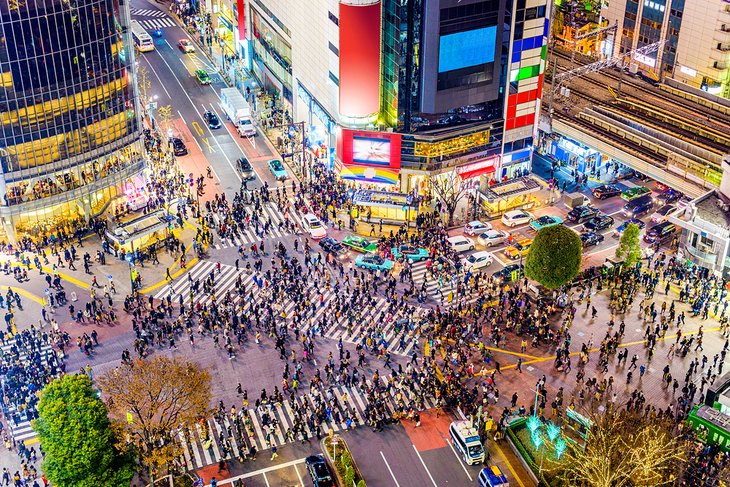
Highlight: More than 3,000 human beings cross the streets at once at this five-way intersection.
If you've never seen an image of Shibuya Crossing, you may want to take a look before you go. Think Times Square, and multiply it several times over. This intersection is one of the most famous in the world, and most definitely the busiest in Japan, flooded with hundreds of thousands of flashing lights from electronic billboards overhead.
At peak times, it is thought that somewhere around 3,000 people cross this five-way intersection at once. It is undoubtedly the mass-transit nucleus of Tokyo. But if the thought of crossing the street with 3,000 of your newest friends is overwhelming, you can always head to the rooftop of the Shibuya 109-2 department store, which has the best bird's-eye view over the organized chaos below.
And even if you aren't in Shibuya to cross the street, you will still find that this neighborhood is absolutely teeming with fabulous restaurants, shopping, and entertainment. It is certainly a neighborhood not to miss when you visit Tokyo.
Map of Tourist Attractions & Things to Do in Tokyo
Best Time to Visit Tokyo, Japan
| Average minimum and maximum temperatures for Tokyo, Japan in °C | |||||||||||
| J | F | M | A | M | J | J | A | S | O | N | D |
| 10 1 | 10 2 | 13 4 | 18 10 | 23 15 | 25 19 | 29 22 | 31 24 | 27 20 | 21 14 | 17 9 | 12 4 |
| PlanetWare.com | |||||||||||
| Average monthly precipitation totals for Tokyo, Japan in mm. | |||||||||||
| 46 | 61 | 99 | 125 | 137 | 185 | 127 | 147 | 180 | 165 | 89 | 46 |
| Average monthly snowfall totals for Tokyo, Japan in cm. | |||||||||||
| 5 | 6 | 3 | 0 | 0 | 0 | 0 | 0 | 0 | 0 | 0 | 0 |
| Average minimum and maximum temperatures for Tokyo, Japan in °F | |||||||||||
| J | F | M | A | M | J | J | A | S | O | N | D |
| 49 34 | 49 35 | 54 39 | 64 50 | 73 58 | 77 65 | 83 72 | 87 75 | 80 68 | 70 57 | 61 48 | 53 39 |
| PlanetWare.com | |||||||||||
| Average monthly precipitation totals for Tokyo, Japan in inches. | |||||||||||
| 1.8 | 2.4 | 3.9 | 4.9 | 5.4 | 7.3 | 5.0 | 5.8 | 7.1 | 6.5 | 3.5 | 1.8 |
| Average monthly snowfall totals for Tokyo, Japan in inches. | |||||||||||
| 2.0 | 2.4 | 1.2 | 0 | 0 | 0 | 0 | 0 | 0 | 0 | 0 | 0 |
Tokyo is a city that enjoys a temperate climate year-round. But the best time to visit Tokyo is March, April, September, October, and November, thanks to its perfect weather and beautiful blossoms and foliage.
September, October, and November are some of the best times to visit Tokyo because they have the best weather. The weather in Tokyo in the fall ranges from 27 degrees to 16 degrees Celsius. The fall is also when the leaves in Tokyo start to change, particularly in October and November. Keep in mind that this is peak time for travelers, so hotel rates may be higher, and expect crowds.
Tokyo is also fabulous during March, April, and May. Temperatures range from 13 to 22 degrees Celsius. April is when Tokyo is awash in pale pink cherry blossoms, as well.
Summers in Tokyo are also top times for tourists, particularly June, July, and August. Expect throngs of crowds during the summer months, as well as heat and humidity. Still, this is one of the top times for tourists to visit Tokyo because schools are out on summer break.
More Related Articles on PlanetWare.com
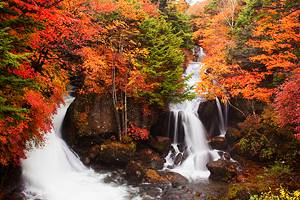
While in Tokyo: Be sure to spend time exploring the many great attractions within an easy day trip of Tokyo. Highlights include family favorites Tokyo Disneyland and Tokyo Disney Sea, as well as a great trip to majestic Mount Fuji.
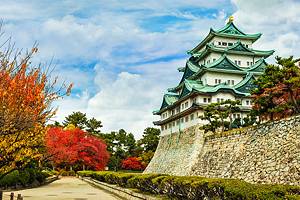
Take the Train: Thanks to Japan's superb rail system, it's possible to use Tokyo as a base to explore numerous other great cities in a day or less. Options include taking a Bullet train to experience the attractions of historic Kyoto (passing Mount Fuji along the way), or heading to Nagoya and exploring the city's many fine shrines and temples, along with its famous castle.
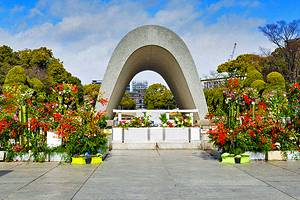
Japan Vacation Ideas: Another city that would serve equally well as a jumping-off point from which to explore Japan is Hiroshima. Here, you can enjoy the amazing Island Shrine of Itsukushima (you can spend the best part of a day here), as well as the many reminders of the city's part in WWII, including Hiroshima Peace Memorial Park and the Peace Memorial Museum. The city of Sapporo on the northernmost island of Hokkaido is also a good place to enjoy the country's rich culture, history, and traditions.




